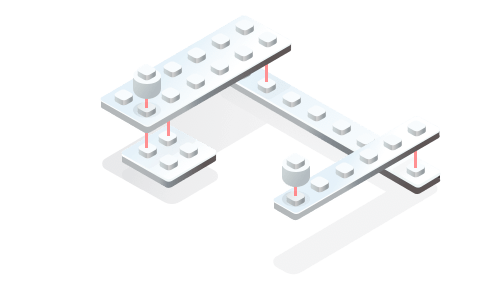There are a variety of approaches QA experts employ with web or mobile app integration testing, and database integration testing. Some of the most practiced include:
Integration Testing
When all the individual units that make up a component, or module, are fully coded and
tested, they are combined together and checked once more as a group in a phase called
integration testing. A group of modules may form the entire software system itself but more
often, they make up major parts of the system.
QA integration testing looks at how components interface and interact when they are
consolidated. Unlike a unit test that focuses strongly on the functionality of a single
piece of code (does it do what we expect it to do?), software integration testing shines a
light on the flow of information and data between modules.
Taking our previously mentioned hot air balloon analogy, the units that make up a hot air balloon can be tested on their own via unit QA, i.e. the basket, the metal cables that connect the basket to the envelope (balloon), the envelope, the propane tanks, and the board burner; however, it is with integration quality assurance that you make sure all the parts work together as expected. For example, do the cables affix correctly and securely to the basket? Do the propane tanks sufficiently supply the burner? Integration phase of quality assurance helps answer those critical questions.

Advantages of Integration Testing
Integration testing in software engineering plays a key role in revealing flaws in the code prior to a system-wide release. Because multiple software developers are often the authors of the various modules that comprise an entire piece of software, you cannot always ensure the same exact logic and architecture was executed across units during the initial engineering. In the important stage of software system integration testing, a group of quality assurance professionals will:
-
Verify the functionality, reliability, and interoperability of multiple system components working together.
-
Catch bugs that may have been overlooked during the evaluation of individual units.
-
Identify and addresses problems with exception handling.
-
Improve software product quality and performance by exposing defects in the interface of the software.
-
Build confidence in the code and enhance developer productivity.
Methods of Integration Testing in Software Engineering
-
Big bang
When all the software units are bundled together, evaluating them in one fell swoop is commonly referred to as a big bang approach.
-
Top-down
This type of integration-level QA starts first with confirming the top-level components while using stubs to simulate lower-level components. Eventually, testers make their way down to examining the actual lower-level components.
-
Bottom-up
Opposite of top-down, a bottom-up approach starts with verifying the low-level units while using drivers to simulate the top-level units. Then testers make their way up to the top-level units for evaluation.
-
Sandwich/hybrid
Sandwich integration testing incorporates a hybrid mix of top-down and bottom-up approaches.

Outsourcing Integration Quality Assurance
For over 12 years, companies have relied on Spiral QA to craft stronger, more user-friendly software through manual and automated integration testing. From specifying requirements that clearly define what interactions should occur between units to creating real-time use cases and running tests as components are assembled, full-cycle quality assurance helps software development teams work smarter, not harder.
Let’s talk about how our QA specialists can help with your software launch.
Contact us to discuss your project.

